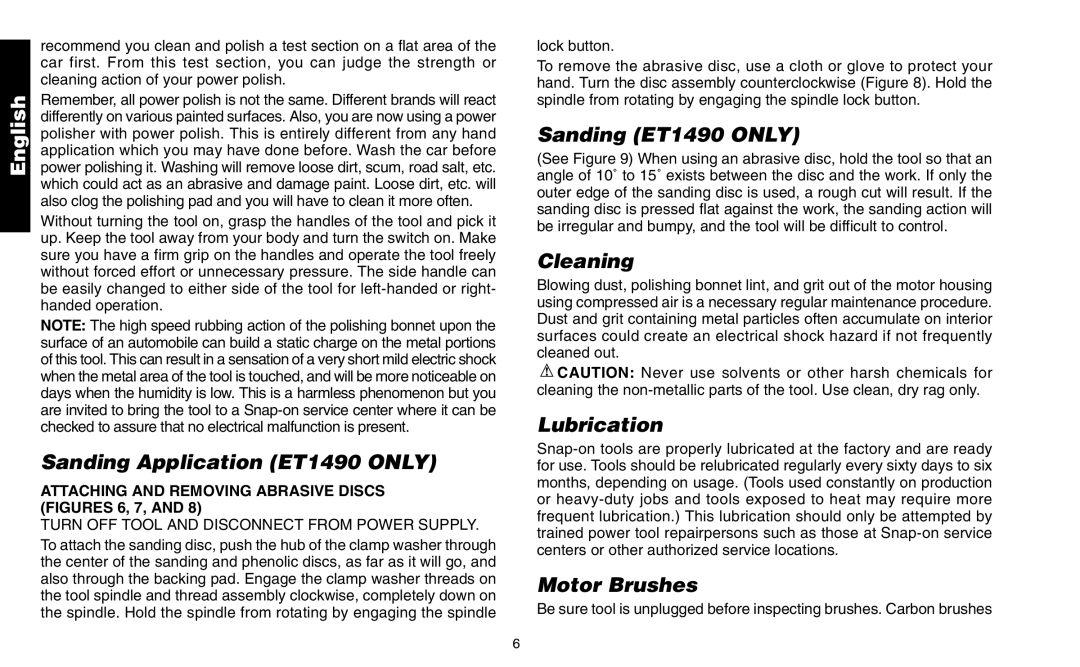English
recommend you clean and polish a test section on a flat area of the car first. From this test section, you can judge the strength or cleaning action of your power polish.
Remember, all power polish is not the same. Different brands will react differently on various painted surfaces. Also, you are now using a power polisher with power polish. This is entirely different from any hand application which you may have done before. Wash the car before power polishing it. Washing will remove loose dirt, scum, road salt, etc. which could act as an abrasive and damage paint. Loose dirt, etc. will also clog the polishing pad and you will have to clean it more often.
Without turning the tool on, grasp the handles of the tool and pick it up. Keep the tool away from your body and turn the switch on. Make sure you have a firm grip on the handles and operate the tool freely without forced effort or unnecessary pressure. The side handle can be easily changed to either side of the tool for
NOTE: The high speed rubbing action of the polishing bonnet upon the surface of an automobile can build a static charge on the metal portions of this tool. This can result in a sensation of a very short mild electric shock when the metal area of the tool is touched, and will be more noticeable on days when the humidity is low. This is a harmless phenomenon but you are invited to bring the tool to a
Sanding Application (ET1490 ONLY)
ATTACHING AND REMOVING ABRASIVE DISCS (FIGURES 6, 7, AND 8)
TURN OFF TOOL AND DISCONNECT FROM POWER SUPPLY.
To attach the sanding disc, push the hub of the clamp washer through the center of the sanding and phenolic discs, as far as it will go, and also through the backing pad. Engage the clamp washer threads on the tool spindle and thread assembly clockwise, completely down on the spindle. Hold the spindle from rotating by engaging the spindle
lock button.
To remove the abrasive disc, use a cloth or glove to protect your hand. Turn the disc assembly counterclockwise (Figure 8). Hold the spindle from rotating by engaging the spindle lock button.
Sanding (ET1490 ONLY)
(See Figure 9) When using an abrasive disc, hold the tool so that an angle of 10˚ to 15˚ exists between the disc and the work. If only the outer edge of the sanding disc is used, a rough cut will result. If the sanding disc is pressed flat against the work, the sanding action will be irregular and bumpy, and the tool will be difficult to control.
Cleaning
Blowing dust, polishing bonnet lint, and grit out of the motor housing using compressed air is a necessary regular maintenance procedure. Dust and grit containing metal particles often accumulate on interior surfaces could create an electrical shock hazard if not frequently cleaned out.
![]() CAUTION: Never use solvents or other harsh chemicals for cleaning the
CAUTION: Never use solvents or other harsh chemicals for cleaning the
Lubrication
Motor Brushes
Be sure tool is unplugged before inspecting brushes. Carbon brushes
6
